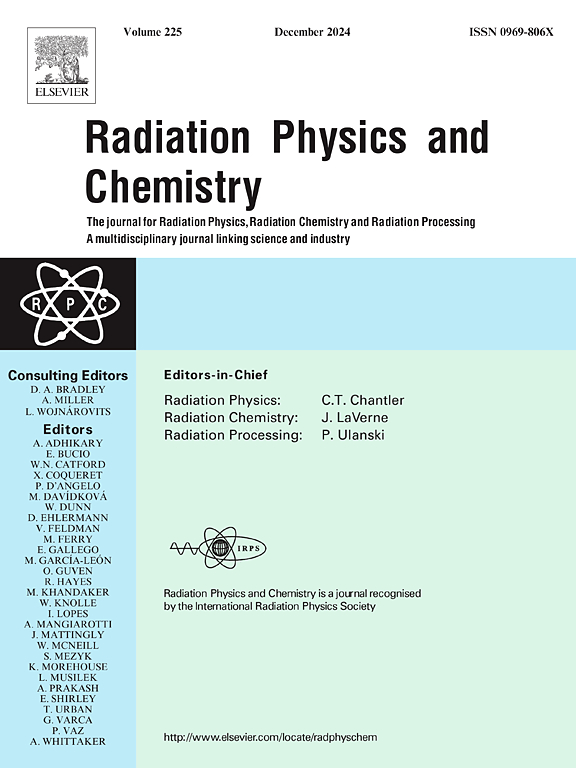Wet gas flow measurement using transmitted gamma-ray profile around a vertical C-line, including a spiral blade preconditioner
IF 2.8
3区 物理与天体物理
Q3 CHEMISTRY, PHYSICAL
引用次数: 0
Abstract
The measurement of wet gas is still an important issue that needs to be investigated. In misty regime conditions, measuring the phase fraction is often inaccurate due to a small amount of liquid spreading over a large area of the tube. This problem is usually addressed by applying correction coefficients, but this can lead to high uncertainties in the final measurement. Providing preconditioning systems that can convert misty flow into a suitable regime to overcome this obstacle is considered a good idea.
In this study, a mixer with spiral blades was designed to eliminate the regime-dependency problem. Its performance was confirmed by converting misty wet gas through the 32״ C-line to quasi-annular flow in the Analysis System (ANSYS) simulator. Next, samples with a density equivalent to the liquid phase and thickness equal to them were created and attached to the inner wall of the C-line tube in the laboratory based on the Computational Fluid Dynamics (CFD) simulation. Finally, the transmitted gamma-ray in different angles around the pipe was measured using a sodium-iodide counter and compared in two situations: placing the radioactive source in the center of the tube or outside it opposite to the scintillation detector. The results demonstrate the proposed system's capability to differentiate between liquid fractions of 1 %, 3 %, and 5 % with a maximum absolute error of ±2 %. This represents a significant improvement compared to conventional methods that rely on gamma transmission without a preconditioning system. Additionally, placing the radioactive source in the tube center was determined to be the optimal option for more accurate measurements.
求助全文
约1分钟内获得全文
求助全文
来源期刊

Radiation Physics and Chemistry
化学-核科学技术
CiteScore
5.60
自引率
17.20%
发文量
574
审稿时长
12 weeks
期刊介绍:
Radiation Physics and Chemistry is a multidisciplinary journal that provides a medium for publication of substantial and original papers, reviews, and short communications which focus on research and developments involving ionizing radiation in radiation physics, radiation chemistry and radiation processing.
The journal aims to publish papers with significance to an international audience, containing substantial novelty and scientific impact. The Editors reserve the rights to reject, with or without external review, papers that do not meet these criteria. This could include papers that are very similar to previous publications, only with changed target substrates, employed materials, analyzed sites and experimental methods, report results without presenting new insights and/or hypothesis testing, or do not focus on the radiation effects.
 求助内容:
求助内容: 应助结果提醒方式:
应助结果提醒方式:


